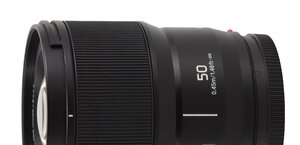Tamron AF 18-250 mm f/3.5-6.3 Di II LD Aspherical (IF)
8. Vignetting

Significant vignetting appears when we deal with usually the most difficult combination of the maximum relative aperture and the shortest focal length. Here, vignetting reaches 33% (-1.15 EV) which is high but not very huge. A small stopping down to f/4.0 reduces this aberration to the level of 25% and by f/5.6 it decreases to 14%. By f/8.0 it becomes practically imperceptible (12%).
Please Support UsIf you enjoy our reviews and articles, and you want us to continue our work please, support our website by donating through PayPal. The funds are going to be used for paying our editorial team, renting servers, and equipping our testing studio; only that way we will be able to continue providing you interesting content for free. |
- - - - - - - - - - - - - - - - - - - - - - - - - - - - - - - - - - - - - - - - - - - - - - - -
At 50 mm the vignetting correction is normal – here , even at maximum aperture it reaches 16% (-0.51 EV) and it decreases to the level of 11% by f/5.6.
With using longer focal lengths the problem becomes significant again but not to the extend we feared. At 125 mm and by f/5.6 the vignetting reaches 23% (-0.77 EV) and it decreases to 13% on stopping down by 1 EV. By f/11 the problem disappears (6%).
At the maximum focal length and maximum aperture the corner brightness loss is 25% (-0.85 EV). This result is not bad, although the light is still average. By f/8.0 the vignetting decreases to the value 16% and by f/11 – to 8%.
In this category the Tamron 18-270 VC results were several percent worse at most of apertures used. The Sigma 18-200 OS had very similar results but its focal lengths range was narrower. Once again, the tested lens fared quite well here.
 |
 |






